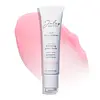What's inside
What's inside
 Key Ingredients
Key Ingredients

 Benefits
Benefits

 Concerns
Concerns

 Ingredients Side-by-side
Ingredients Side-by-side

Phytosteryl/Isostearyl/Cetyl/Stearyl/Behenyl Dimer Dilinoleate
Skin ConditioningDiisostearyl Malate
EmollientHydrogenated Polyisobutene
EmollientCocos Nucifera Oil
MaskingMicrocrystalline Wax
Emulsion StabilisingSynthetic Wax
AbrasiveButyrospermum Parkii Butter
Skin ConditioningHydrogenated Poly(C6-14 Olefin)
EmollientAroma
Polyglyceryl-2 Diisostearate
EmulsifyingOctyldodecanol
EmollientDisteardimonium Hectorite
StabilisingPropylene Carbonate
SolventStevia Rebaudiana Leaf/Stem Extract
MaskingAstrocaryum Murumuru Seed Butter
EmollientTocopheryl Acetate
AntioxidantWater
Skin ConditioningSodium Hyaluronate
HumectantPhytosteryl/Isostearyl/Cetyl/Stearyl/Behenyl Dimer Dilinoleate, Diisostearyl Malate, Hydrogenated Polyisobutene, Cocos Nucifera Oil, Microcrystalline Wax, Synthetic Wax, Butyrospermum Parkii Butter, Hydrogenated Poly(C6-14 Olefin), Aroma, Polyglyceryl-2 Diisostearate, Octyldodecanol, Disteardimonium Hectorite, Propylene Carbonate, Stevia Rebaudiana Leaf/Stem Extract, Astrocaryum Murumuru Seed Butter, Tocopheryl Acetate, Water, Sodium Hyaluronate
Diisostearyl Malate
EmollientBis-Diglyceryl Polyacyladipate-2
EmollientHydrogenated Polyisobutene
EmollientButyrospermum Parkii Butter
Skin ConditioningSynthetic Wax
AbrasiveCera Microcristallina
Emulsion StabilisingMica
Cosmetic ColorantIsostearyl Alcohol
EmollientHelianthus Annuus Seed Oil
EmollientAroma
Ethylhexyl Palmitate
EmollientEthylene/Propylene/Styrene Copolymer
Tocopheryl Acetate
AntioxidantDimethicone
EmollientTricholoma Matsutake Extract
Skin ConditioningTribehenin
EmollientDehydroacetic Acid
PreservativeButylene/Ethylene/Styrene Copolymer
Sorbitan Isostearate
EmulsifyingSodium Saccharin
MaskingPolyglyceryl-2 Diisostearate
EmulsifyingLimonene
PerfumingPalmitoyl Tripeptide-8
Skin ConditioningTitanium Dioxide
Cosmetic ColorantCI 15850
Cosmetic ColorantDiisostearyl Malate, Bis-Diglyceryl Polyacyladipate-2, Hydrogenated Polyisobutene, Butyrospermum Parkii Butter, Synthetic Wax, Cera Microcristallina, Mica, Isostearyl Alcohol, Helianthus Annuus Seed Oil, Aroma, Ethylhexyl Palmitate, Ethylene/Propylene/Styrene Copolymer, Tocopheryl Acetate, Dimethicone, Tricholoma Matsutake Extract, Tribehenin, Dehydroacetic Acid, Butylene/Ethylene/Styrene Copolymer, Sorbitan Isostearate, Sodium Saccharin, Polyglyceryl-2 Diisostearate, Limonene, Palmitoyl Tripeptide-8, Titanium Dioxide, CI 15850
Ingredients Explained
These ingredients are found in both products.
Ingredients higher up in an ingredient list are typically present in a larger amount.
Aroma refers to an ingredient, or mixture of ingredients, that impart or mask a flavor.
The name is slightly confusing. This is because INCI associates aroma with flavor instead of smell.
Here is the official definition from the The International Cosmetic Ingredient Dictionary and Handbook:
“Aroma is a term for ingredient labeling used to identify that a product contains a material or combination of materials normally added to a cosmetic to produce or to mask a particular flavor.”
INCI shows the only purpose of aroma to be "flavouring".
However, due to regulation differences, some companies may use aroma in place of parfum.
In Canada, this ingredient only has to be listed in concentrations above 1%.
Learn more about AromaThis ingredient is also known as shea butter. It is an effective skin hydrator and emollient.
Emollients help soothe and soften your skin. It does this by creating a protective film on your skin. This barrier helps trap moisture and keeps your skin hydrated. Emollients may be effective at treating dry or itchy skin.
Shea butter is rich in antioxidants. Antioxidants help fight free-radicals, or molecules that may harm the body. It is also full of fatty acids including stearic acid and linoleic acid. These acids help replenish the skin and keep skin moisturized.
While Shea Butter has an SPF rating of about 3-4, it is not a sunscreen replacement.
Shea butter may not be fungal acne safe. We recommend speaking with a professional if you have any concerns.
Learn more about Butyrospermum Parkii ButterDiisostearyl Malate is an emollient and most often used in lip products. It comes from isostearyl alcohol, a fatty acid, and malic acid, an AHA.
As an emollient, Diisostearyl Malate helps create a thin film on your skin to trap moisture in. This helps keep your skin soft and smooth.
Hydrogenated Polyisobutene is a synthetic polymer. Polymers are compounds with high molecular weight. Hydrogenated Polyisobutene is an emollient and texture enhancer.
In one study, Hydrogenated Polyisobutene showed better skin hydration levels than Caprylic/Capric Triglyceride. As an emollient, it helps keep your skin soft and hydrated by trapping moisture in.
Hydrogenated Polyisobutene is often used as a mineral oil replacement.
Learn more about Hydrogenated PolyisobutenePolyglyceryl-2 Diisostearate isn't fungal acne safe.
Synthetic Wax is created from fossil fuels such as natural gas. It is used to enhance texture, adjust pH, and as an occlusive.
It may also be used as an abrasive ingredient to exfoliate the skin.
Synthetic Wax may not be fungal acne safe.
Learn more about Synthetic WaxTocopheryl Acetate is AKA Vitamin E. It is an antioxidant and protects your skin from free radicals. Free radicals damage the skin by breaking down collagen.
One study found using Tocopheryl Acetate with Vitamin C decreased the number of sunburned cells.
Tocopheryl Acetate is commonly found in both skincare and dietary supplements.
Learn more about Tocopheryl Acetate